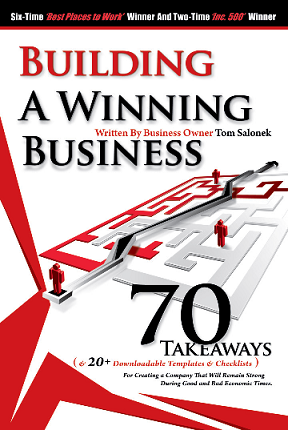Building a Winning Business – The Job Offer
 When negotiating an offer, clarity and a deadline are essential. In negotiating, the person with the least amount of interest has the most power. When you’ve presented your offer, don’t hound the candidate. It makes you seem desperate. If the candidate starts making hefty demands, think hard about whether this person will fit in your organization over the long term. If you agree to bonuses and other perks, make sure the person understands what you expect in return.
When negotiating an offer, clarity and a deadline are essential. In negotiating, the person with the least amount of interest has the most power. When you’ve presented your offer, don’t hound the candidate. It makes you seem desperate. If the candidate starts making hefty demands, think hard about whether this person will fit in your organization over the long term. If you agree to bonuses and other perks, make sure the person understands what you expect in return.
.
.
.
- If you require employees to sign a non-compete agreement, remember that you must disclose that at the same time you make the offer. Conversely, if you decide to pass on a candidate, succinctly thank the person for his time and frame the rejection letter correctly by stating, “At this time, given our interview process, we are choosing to proceed with other candidates.” This makes the rejection clean and gives the candidate no opening to try to change your mind.
- Finally, put an expiration date on the offer. Give the candidate a reasonable amount of time to make a decision, but for everyone’s sake, provide a definite end date on the offer consideration period.
Tom’s Takeaway: “Once you’ve presented a fair offer with a clear deadline attached, give the candidate a reasonable amount of time to make the decision.”
—
Thoughts Since the Book:
- Like a business deal or personal purchase, with a high-end candidate, know your “walk away number”
